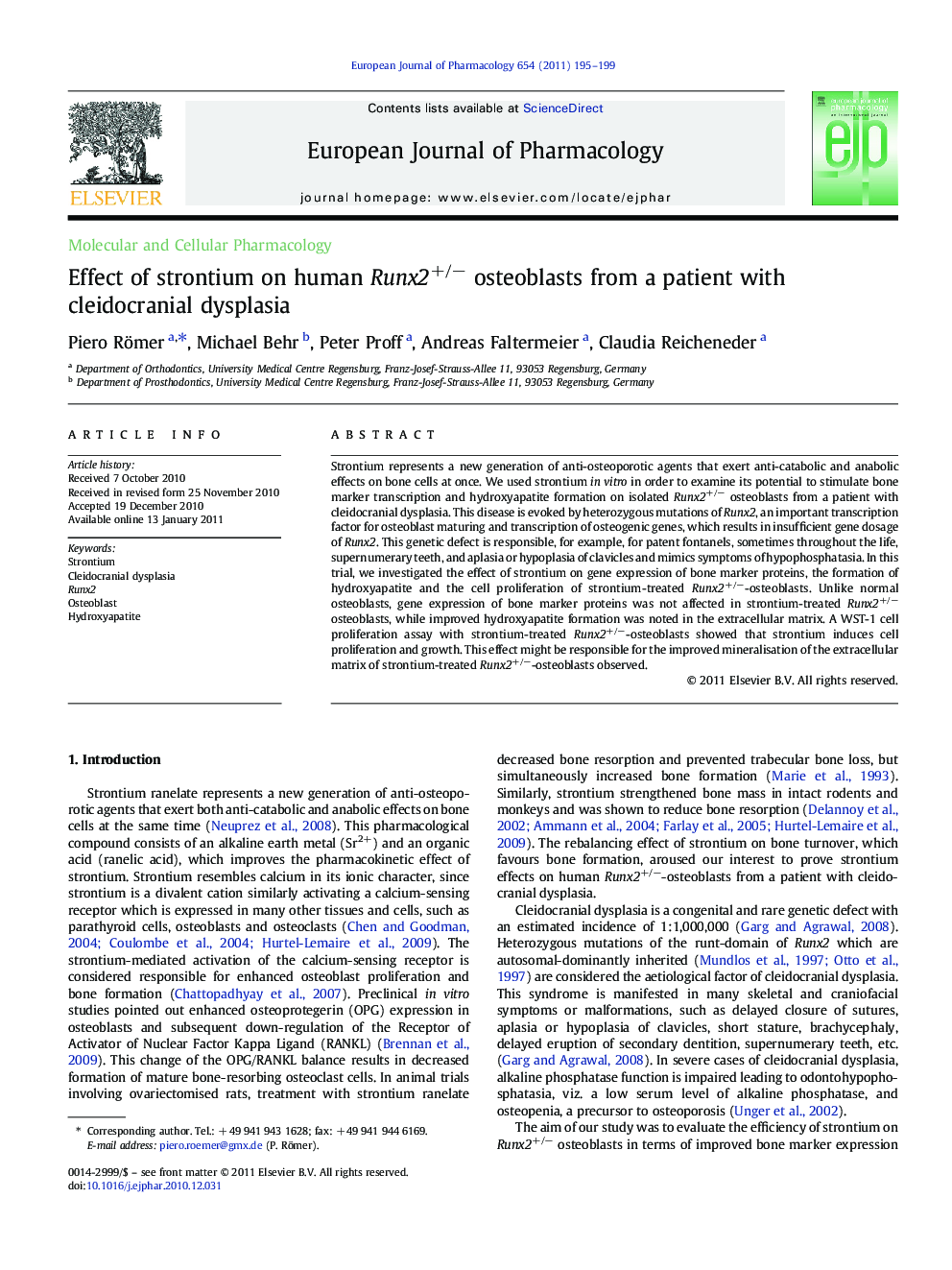| Article ID | Journal | Published Year | Pages | File Type |
|---|---|---|---|---|
| 2532966 | European Journal of Pharmacology | 2011 | 5 Pages |
Strontium represents a new generation of anti-osteoporotic agents that exert anti-catabolic and anabolic effects on bone cells at once. We used strontium in vitro in order to examine its potential to stimulate bone marker transcription and hydroxyapatite formation on isolated Runx2+/− osteoblasts from a patient with cleidocranial dysplasia. This disease is evoked by heterozygous mutations of Runx2, an important transcription factor for osteoblast maturing and transcription of osteogenic genes, which results in insufficient gene dosage of Runx2. This genetic defect is responsible, for example, for patent fontanels, sometimes throughout the life, supernumerary teeth, and aplasia or hypoplasia of clavicles and mimics symptoms of hypophosphatasia. In this trial, we investigated the effect of strontium on gene expression of bone marker proteins, the formation of hydroxyapatite and the cell proliferation of strontium-treated Runx2+/−-osteoblasts. Unlike normal osteoblasts, gene expression of bone marker proteins was not affected in strontium-treated Runx2+/− osteoblasts, while improved hydroxyapatite formation was noted in the extracellular matrix. A WST-1 cell proliferation assay with strontium-treated Runx2+/−-osteoblasts showed that strontium induces cell proliferation and growth. This effect might be responsible for the improved mineralisation of the extracellular matrix of strontium-treated Runx2+/−-osteoblasts observed.
